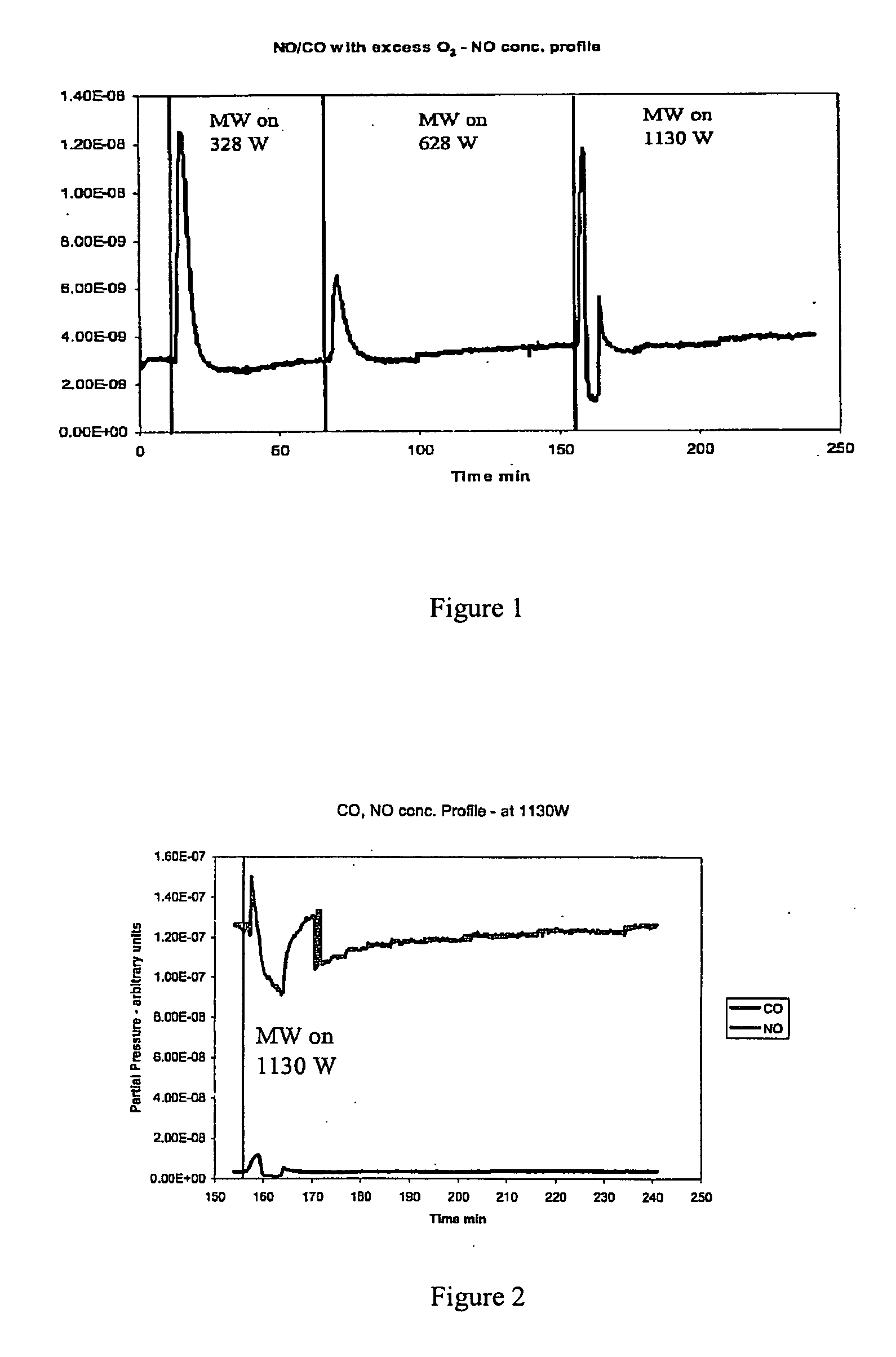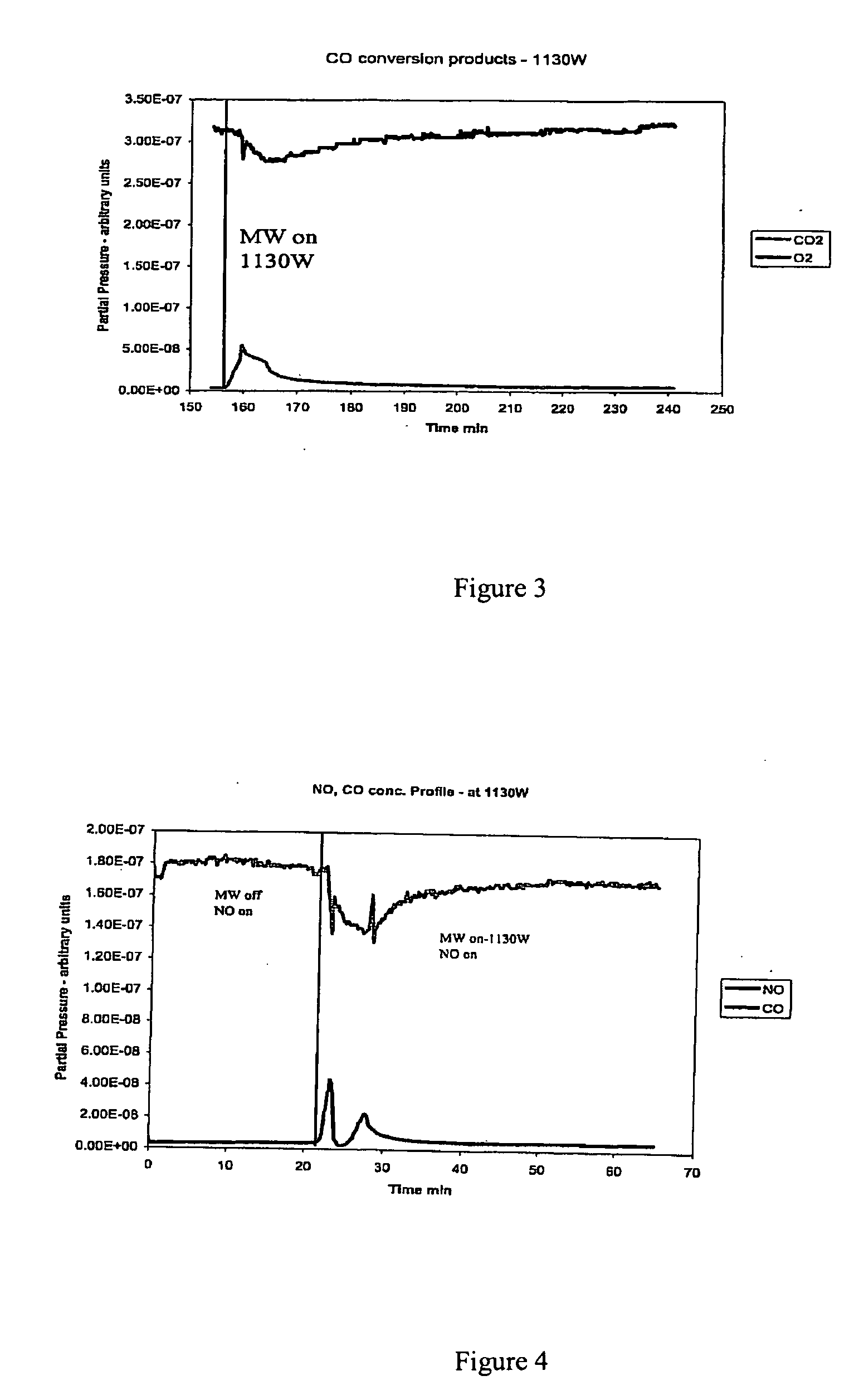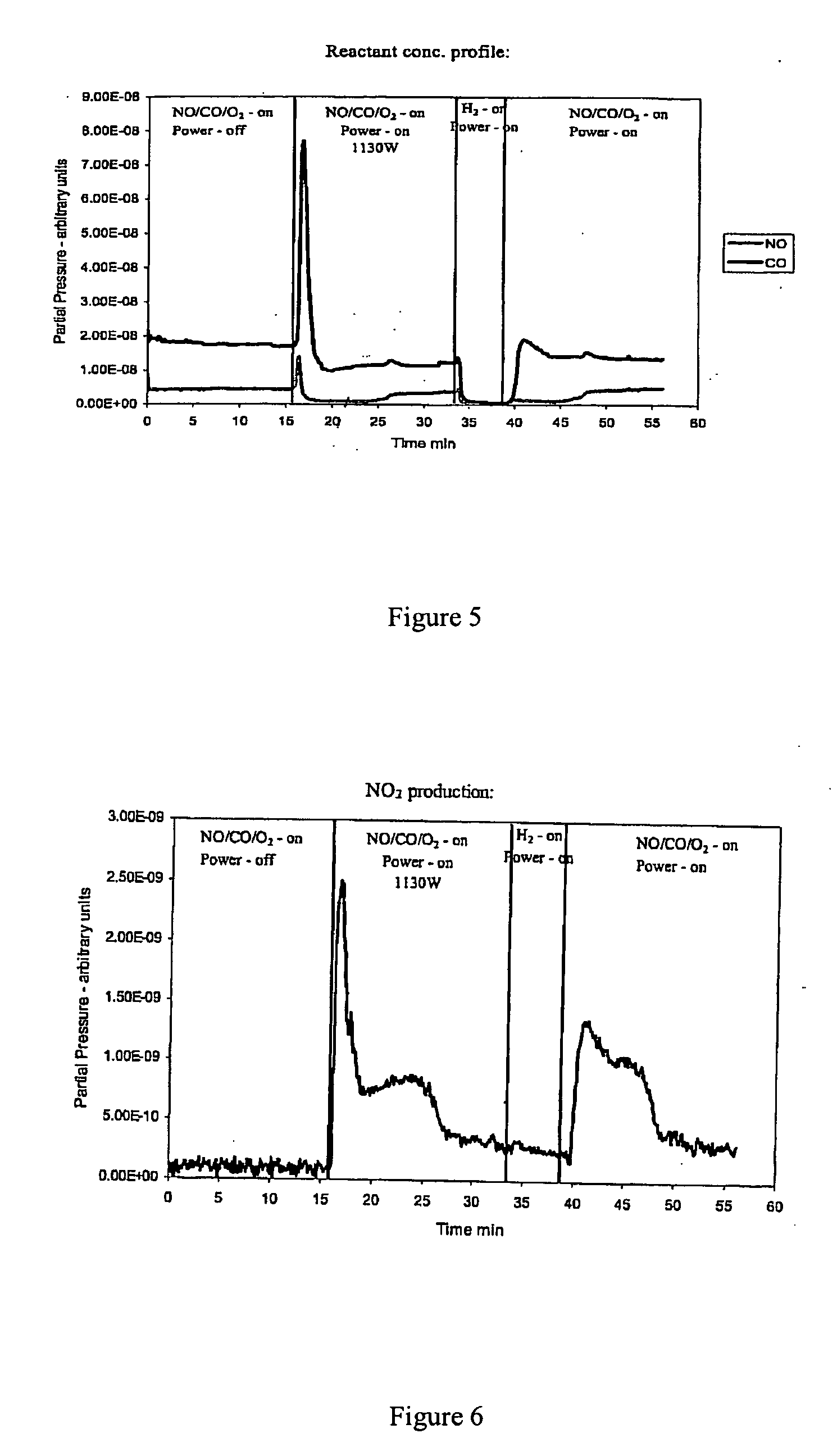Process using microwave energy and a catalyst to decompose nitrogen oxides
a nitrogen oxide and microwave energy technology, applied in the direction of separation processes, arsenic compounds, silicon compounds, etc., can solve the problems of lack of infrastructure, limited use of urea on vehicles, and only functioning of 3-way catalysts properly
- Summary
- Abstract
- Description
- Claims
- Application Information
AI Technical Summary
Problems solved by technology
Method used
Image
Examples
examples
[0017] The catalyst described is a 0.5 wt % Platinum reduction-oxidation component dispersed in an Aluminum Oxide support material with a 26% dispersion and a 125 micrometer particle size. About 500 mg of the catalyst was packed between quartz wool plugs in a quartz tubular reactor.
[0018] The experiments were performed using an ASTEX model GL139 microwave reactor. The power output of the oven was regulated using a Micristar controller. Microwaves were generated at 2.45 GHz with a maximum variable power supply of 1.3 kW. Nitrogen Oxide experiments were carried out at atmospheric pressure in a continuous flow fixed-bed tubular quartz reactor with Teflon fittings. The reactants Nitrogen oxide and Carbon Monoxide in excess of oxygen were reacted over the catalyst. The reaction mixture of 400 ppm Nitrogen Oxide, 6500 ppm Carbon Monoxide and 5% Oxygen in Helium was supplied to the reactor at a flow rate of 25 ml / minute. The nitrogen oxide and reactant compounds were monitored using an on...
PUM
 Login to View More
Login to View More Abstract
Description
Claims
Application Information
 Login to View More
Login to View More - R&D
- Intellectual Property
- Life Sciences
- Materials
- Tech Scout
- Unparalleled Data Quality
- Higher Quality Content
- 60% Fewer Hallucinations
Browse by: Latest US Patents, China's latest patents, Technical Efficacy Thesaurus, Application Domain, Technology Topic, Popular Technical Reports.
© 2025 PatSnap. All rights reserved.Legal|Privacy policy|Modern Slavery Act Transparency Statement|Sitemap|About US| Contact US: help@patsnap.com



